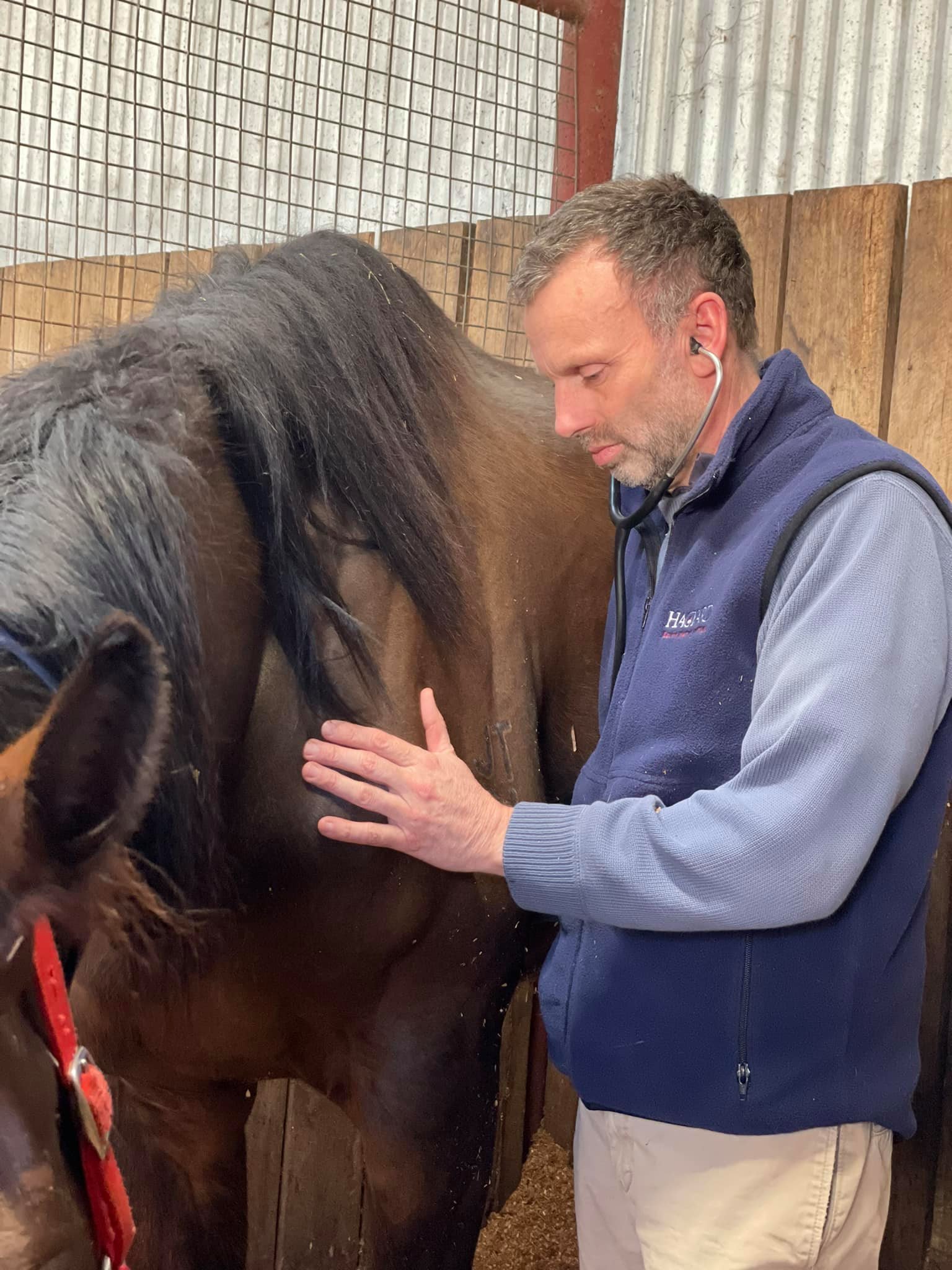Client information
It can be distressing when our four-legged friends show signs of illness or lameness. Being able to identify changes in their health early on is important for early intervention. The following information is a handy guide to monitoring your horse’s health at home. This is a guide based on the average horse.
Cardinal signs of a horse at rest
TPR* (temperature, pulse and respiration)
Temperature: 37–38°C

Pulse: 24–40 bpm (beats per minute)

Respiration: 8–16 bpm (breaths per minute)
To calculate respiration rate, count the number of breaths for 15 seconds and then multiply by four.
Capillary Refill Time: 1–2 seconds
To assess CRT, press thumb against gum for two seconds. The white mark created should return to pink within one to two seconds.

Additional signs to monitor
Gut: No sound is abnormal
Behaviour*: What to watch for: disinterested, dull attitude and loss of appetite
Mucous Membrane (MM)
The lining of a horse’s gums, eyelids and nostrils should ideally be healthy, pink and moist. Discolouration and dryness can be abnormal.
Hydration: An average 500kg horse consumes approximately 36L of water in a day depending on the ambient temperature. A horse's body is made up of approximately 70 per cent water and hydration is vital for horses as it regulates body temperature in hot climates through sweat and aids in digestion and excretion of waste through urine.
Faeces: A healthy horse weighing approximately 500kg will defecate from four to thirteen times a day. Taking note of the manure your horse passes is an easy way to monitor a horse's health and their digestive system. Consistency and colour will vary according to diet though it should be passed frequently without difficulty.
*Based on the average horse
